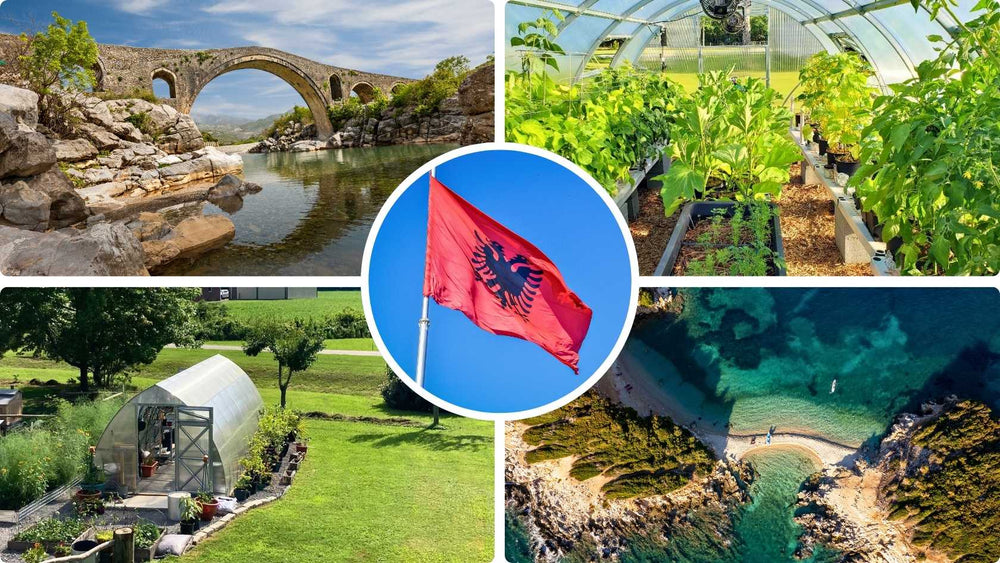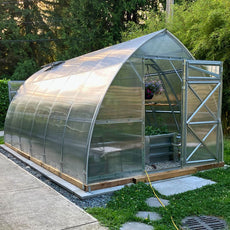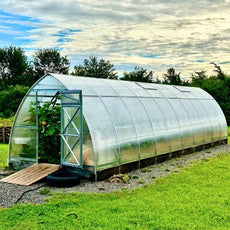In this article, you will learn:
- Characteristics of the Albania’s Growing Regions
- Challenges of Gardening in Albania
- The Benefits of Using a Greenhouse in Albania
Albania experiences a Mediterranean climate influenced by a continental climate in its interior. Winters in the highlands can be cold, often dipping to -5°C, while coastal regions remain milder, rarely dropping below 5°C.
Summers are generally warm to hot, ranging from 25°C to 35°C, although heatwaves occasionally push these numbers higher. Understanding Albania's climate is essential for planning successful gardens and agricultural activities.

Image from Plant Maps
Characteristics of the Albania’s Growing Regions
- Mediterranean and continental climate influences
- Cold winters in mountain regions, mild winters along the coast
- Winter temperatures range from -5°C in the highlands to 5°C in the lowlands
- Hot summers with averages between 25°C and 35°C
- Varied rainfall, with higher precipitation in mountainous areas
- Distinct seasons, including a prolonged summer growing period
Albania’s primary growing season typically runs from April to October, although the exact timing can vary based on elevation and local conditions.
The mild coastal areas may support year-round gardening for some crops, while the interior regions face more significant seasonal challenges.
Challenges of Growing in Albania
Late Spring Frosts
Gardeners in Albania’s interior regions often contend with late spring frosts, particularly in higher elevations. These frosts, which can persist until May, risk young plants and early-season crops, necessitating protective strategies like frost cloths or low tunnels.
Urban Heat Island Effect
Cities like Tirana experience the urban heat island effect, where temperatures are significantly higher than surrounding rural areas. This intensified heat can stress plants and dry out the soil quickly, making irrigation and shading even more critical.
Water Access and Quality
Urban gardeners may face inconsistent access to water or high irrigation costs. Moreover, tap water in some areas may contain chemicals, such as chlorine, that can harm sensitive plants, requiring filters or alternative water sources like rainwater harvesting.

The Benefits of Using a Greenhouse in Albania
Greenhouses provide Albanian gardeners with a vital solution to overcome the limitations of the country’s diverse and often challenging climate. These structures create a controlled environment, mitigating the impact of frost, heat, and unpredictable weather.
Extend Your Growing Season
- Without a greenhouse:
Albanian gardeners typically have a growing season from April to October, with frost-free periods limited to coastal regions. This shorter season restricts the range of crops grown outdoors, especially in interior and mountainous areas.
- With a greenhouse:
A greenhouse can significantly extend the growing season, enabling gardeners to start seedlings as early as February and continue harvesting well into December. Hardy crops like lettuce, spinach, and kale can be cultivated year-round, allowing for a more diverse and abundant harvest.

Grow a Wider Variety of Vegetables
- Without a greenhouse:
Outdoor gardening in Albania generally favors hardy, cool-season crops like:
|
Cabbage Peas Lettuce Spinach |
Beets Leeks Carrots Garlic |
- With a Greenhouse:
A greenhouse opens up possibilities for growing a broader array of crops, including warm-season vegetables and exotic fruits such as:
|
Tomatoes Cucumbers Sweet peppers Aubergines Melons Butternut squash Microgreens |
Basil, Coriander Lemongrass Strawberries Table grapes Figs Apricots Nectarines |
Runner beans Snap peas Globe artichokes Courgettes Citrus fruits Physalis Chili peppers |





